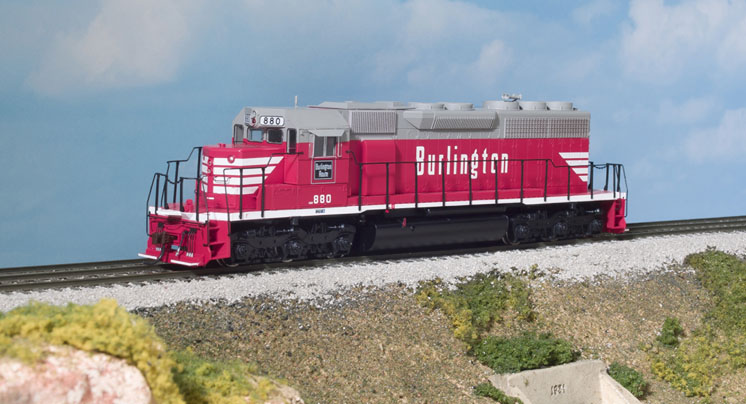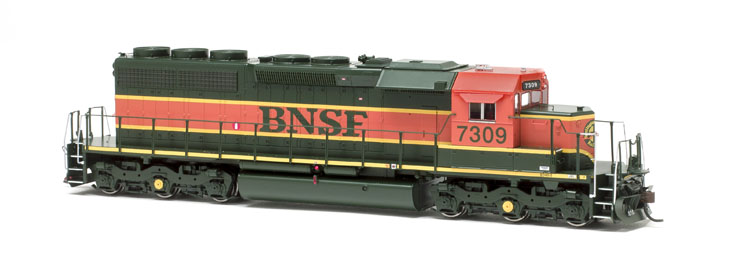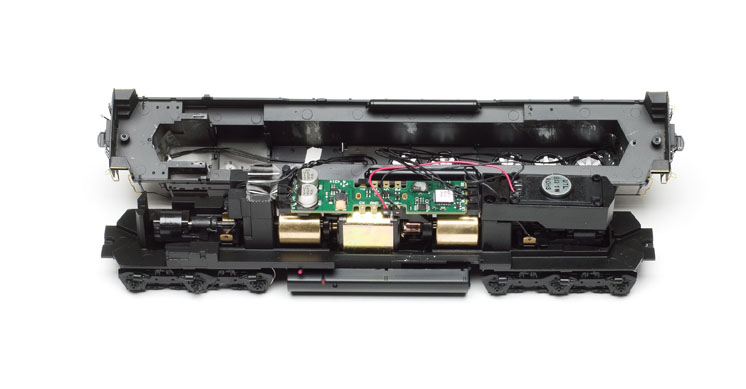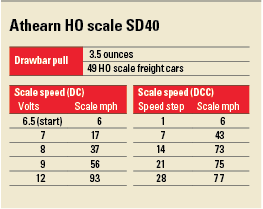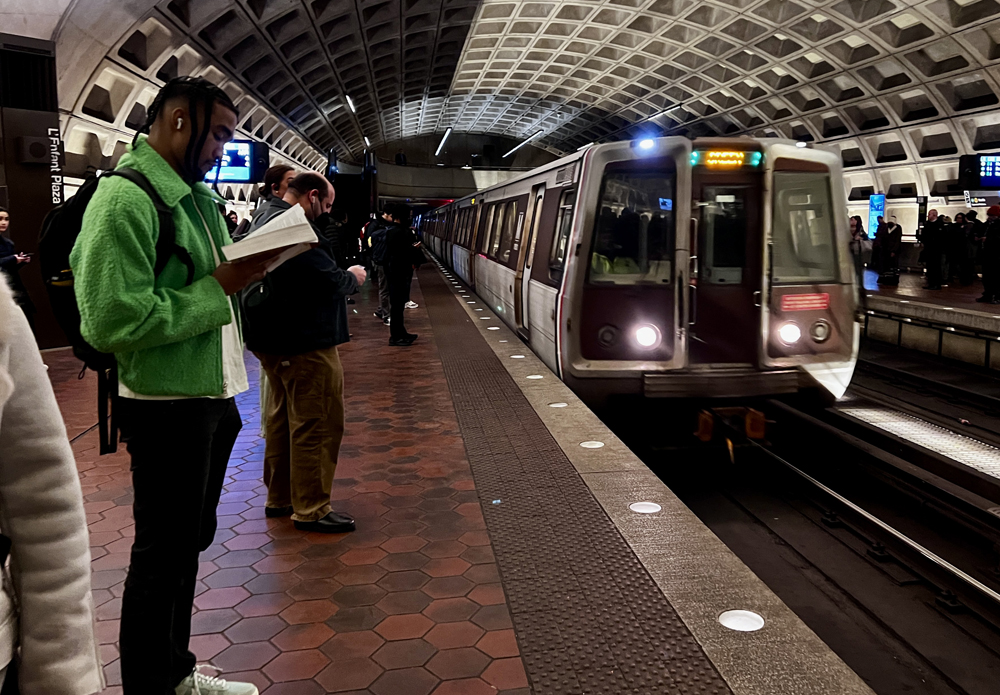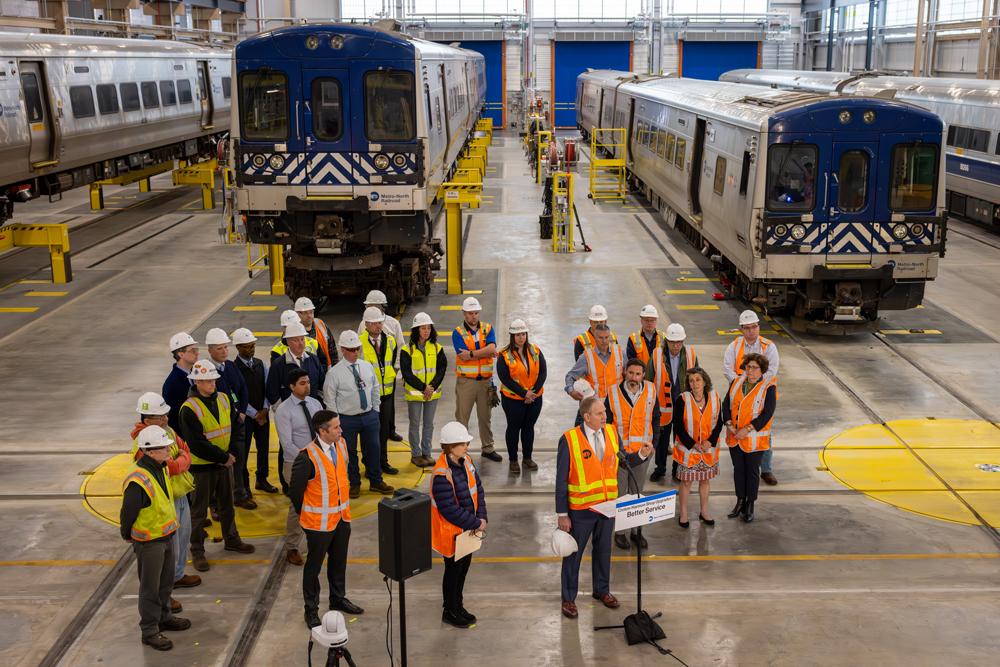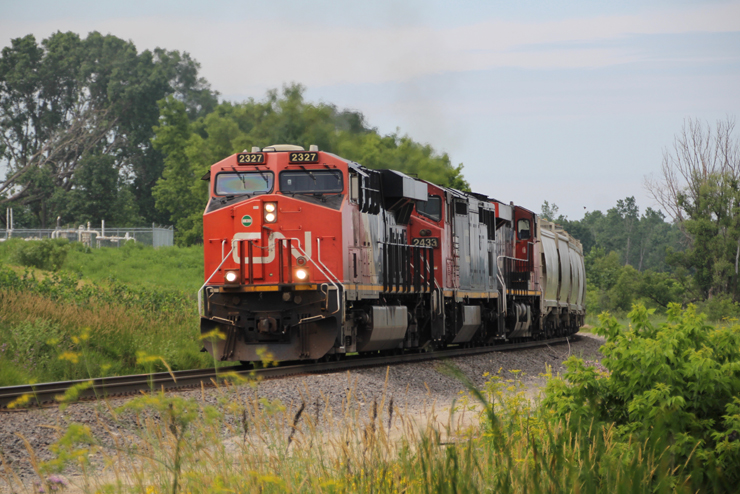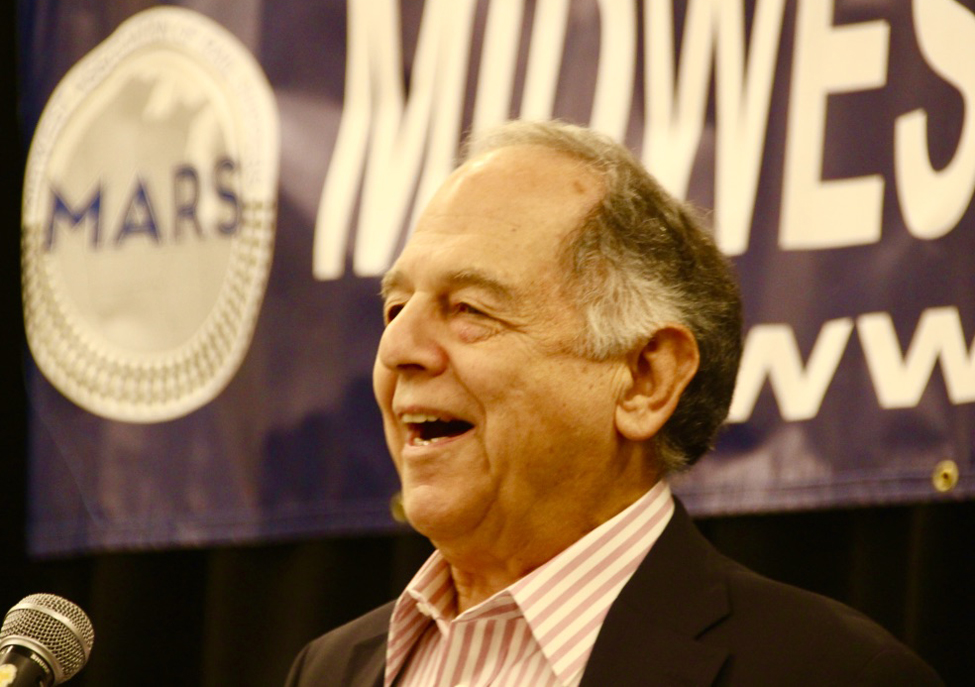The prototype. The six-axle SD40 shared its frame with the larger SD45. The SD40 had a 16-cylinder engine rated at 3,000 horsepower, while the SD45 had a 20-cylinder, 3,600-horsepower engine. The SD40’s shorter engine resulted in a shorter carbody, which created the distinctive front and rear porches that make the locomotive easily recognizable.
Between January 1966 and August 1972, EMD produced 1,275 SD40s for railroads in the United States, Mexico, and Canada. In 1972, EMD began production of the SD40-2, which featured improved electronics, among other updates.
The model. Although similar in construction to Athearn’s 2009 release, this model has multiple differences in detail, roadname-specific details being the major departure. Athearn’s instruction sheet lists all of the parts available for this model. For example, there are 26 different body shells and 20 different nose castings.
We examined three sample locomotives, painted for Burlington Northern Santa Fe; Chicago, Burlington & Quincy; and Norfolk & Western. The CB&Q unit had a standard range dynamic brake housing with a short taper, among other roadname-specific features.
All three models had opaque paint with sharp separation lines, although the CB&Q locomotive had a bit of red paint showing through the joints around the dynamic brake housing and the dustbin hatch. On the Burlington model, the drop steps are painted white, but in photos I found they appear red despite being covered in dirt.
All of the models’ drop steps were lowered. Athearn makes another part, 98570.02 Drop Step – Raised, if that’s your preference. The models also include extra parts to detail the fuel tanks. A diagram on the instruction sheet illustrates the parts placement.
There are a couple details that aren’t included that a modeler may wish to add. There are no lift rings or windshield wipers on the models, but the plastic body shells include drilling points for these parts. Several aftermarket parts suppliers offer these details.
Dimensions of the locomotives matched prototype drawings in the 1970 Car & Locomotive Cyclopedia (Simmons-Boardman), except the truck center-to-center spacing, which was 6″ too short.
Under the hood, I found a typical Athearn driveline. A five-pole motor with brass flywheels sits low in the die-cast-metal chassis. Posts in the die-cast frame support weights at each end of the motor, and the Digital Command Control (DCC) decoder is screwed to them. All wheels pick up power, and wires from tabs on the trucks power the decoder. A downward-facing speaker is mounted above the rear truck. The models are equipped with incandescent lights.
On the test track. All of our samples were DCC equipped, with RTR Sound by SoundTraxx DCC decoders. But they can also be used on DC layouts.
In DC mode using a Model Rectifier Corp. Tech 4 power pack, sounds started at 6.5V. By 7V, the locomotive started moving, and I could throttle back down to 6.5V to get a smooth 6 scale mph low speed. By adjusting configuration variable (CV) 63, Analog Mode Motor Start Voltage, to a value of 55 on a DCC system, I was able to improve slow speed performance to a smooth 2.3 scale mph.
Sounds included the diesel prime mover notching up as I applied more voltage, then back down as I slowed. Under about 36 scale mph, the bell sounded.
A quick increase of the throttle produced a grade-crossing signal. The locomotive reached a top speed of 93 scale mph at 12V, about 10 mph faster than the highest gearing available on the prototype would allow. An MRC Tech 6 or another analog sound controller would allow more control of DCC functions on a DC layout.
On DCC, sound started once power was applied to the test track. The locomotive started moving at 6 scale mph in speed step 1, and reached 77 scale mph in speed step 28. This top speed is within the range of the prototype.
Using the SoundTraxx user manual from the Athearn website, I tweaked the programming by changing CVs. I set Vstart, CV2, which controls the voltage to the motor at startup, to a value of 0 to try to lower the speed in speed step 1. Next, to smooth the transition from speed step to speed step, and to add momentum, I changed CV3, acceleration rate, to a value of 55, and CV4, braking rate, to 44. Changing CV2 had no effect on slow speed, but switching to 128 speed steps did. At 128 speed steps, the Athearn SD40 crept along at 2 scale mph in speed step 1.
Other DCC-operated features include operating ditch lights on the BNSF model, and a Gyralight on the CB&Q locomotive. Function 5 triggers both lights. The RTR Sound by SoundTraxx decoder lacks the equalizer, reverb, dynamic brake, brake squeal/release, coupler crash, headlight dimmer, and train brake found on the full-featured Tsunami decoders.
On the Model Railroader staff layout, the Milwaukee, Racine & Troy, the SD40 had no trouble pulling a 14-car train of trough-bottom coal gondolas up a 3 percent grade. The model’s 3.5 ounces of drawbar pull is equivalent to 49 free-rolling cars on straight and level track.
With its wealth of detail, and SoundTraxx sound decoder, Athearn’s SD40 offers similar value to model railroaders as the prototype did to full-sized railroads. If your layout is in need of some second-generation, six-axle diesel power, your search may have ended here.
Price: $184.98 (DCC and sound), $134.98 (DC, no sound)
Manufacturer
Athearn
1600 Forbes Way, Suite 120
Long Beach, CA 90810
www.athearn.com
Era: 1966 to present, depending on paint scheme
Road names (multiple road numbers): Chicago, Burlington & Quincy; Atchison, Topeka & Santa Fe; Burlington Northern; Burlington Northern Santa Fe; Canadian National; Canadian Pacific; Central RR of New Jersey; Central Oregon & Pacific; Chesapeake & Ohio; Chicago Great Western; Conrail; Missouri Pacific; Montana Rail Link; Norfolk & Western; Southern Pacific; undecorated.
Features
▪▪All-wheel drive and electrical pickup
▪▪Five-pole motor with flywheels
▪▪McHenry knuckle couplers mounted at correct height
▪▪Metal RP-25 wheels in gauge
▪▪Minimum radius: 18″, recommended radius: 22″
▪▪Weight: 15.3 ounces





